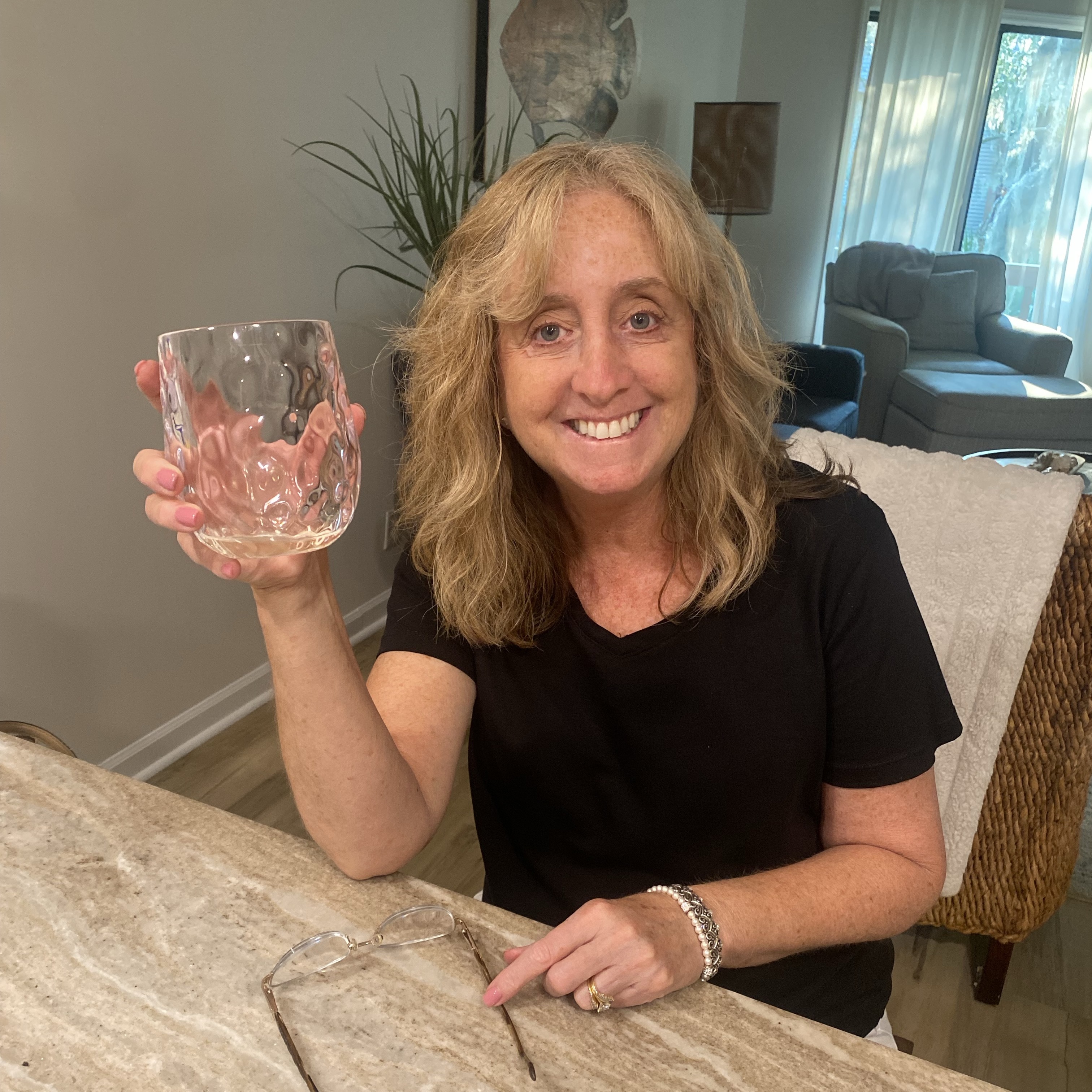Fluent Wine Company
Burckel Jung
Lieu-Dit Sandreben Riesling 2018
Krug
Brut Rosé Champagne Blend
There are certain occasions that call for Krug Rosé. So, HBTM! The bottle was corked in the summer of 2014. It’s a blend of 45 reserve wines with the oldest being from 2007 and the youngest 2002. This is why I think Champagne Makers are some of the most talented people making wine. They are constantly blending up to 100 plus wines to bring that bottle to bottle and year to year branded flavor of consistency. On the nose; red & pink spring flowers, cherries, strawberries, watermelon, black cherry, black raspberries, notes of blood orange citrus, baked bread, soft volcanic mineral and elegant chalkiness. The palate is always ridiculously delicate. Micro bubbles, silky rich texture with beautiful soft acidity. The palate fruits are similar to the nose; rich & ripe cherries, strawberries watermelon, black cherry, black raspberries, notes of blood orange citrus with hints of marmalade. Red & pink spring flowers, baguette crust, soft powdery minerals that give the palate a slight sting and super powdery chalkiness done just right. The finish is beautifully rich, textured, revealing itself in layers and lasts minutes. Photos of; Founder Joseph Krug, House of Krug, Winemaker Eric Lebel, Krug’s Clos du Mesnil, a small plot of 1.85 hectares of Chardonnay...one of the world’s greatest vineyards and their salon tasting room. Producer history & notes...Krug was founded by Joseph Krug in 1853. They are based in Reims, the main city in France’s Champagne region. It is one of the famous Champagne houses that formed part of the Grande Marques. Today the house is majority owned by the multinational conglomerate LVMH, which owns Moët Hennessy, Louis Vuitton S.A. and who’s wine producer portfolio includes other well known wine brands such as; Moët & Chandon, Veuve Clicquot, Château d'Yquem, Ruinart & Cheval Blanc, Dom Perignon and many others. Despite LVMH's majority ownership, the family is still actively involved in all the key decisions of the house but does not manage the day-to-day operations. Joseph Krug was born Johann-Joseph Krug, a butcher’s son, in Mainz, on the Rhine in 1800 when the city was part of the Napoleonic Empire. Having dispensed with the name Johann, he left Mainz in 1824 and in 1834 moved on to Paris. Germans were in demand in France as accountants and bookkeepers. So, Joseph joined Champagne Jacquesson in Châlons-sur-Marne. He spent eight years with Jacquesson. His work took him beyond accountancy. He went around Europe testing the market and assessing criticism from wine sellers and customers. He learned about composition and taste so that by 1840 he already seemed to have been blending Champagne for at least one other house. In 1841, he married Emma-Anne Jaunay. The daughter of a French hotelier based in London’s Leicester Square. The following year their son Paul Krug was born. In 1842 he moved to Reims and following a year later, Krug et Cie was founded with his partner, Hyppolite de Vivès. Joseph was fluent in French, English and German and even spoke some Russian, putting the company in position to exploit key overseas markets. Joseph died in 1866 and was succeeded by his son Paul Krug, who had been trained by his father to takeover. Joseph under the supervision of Paul, Krug was established as a Grande Marque. By the 1880s the prestige of Krug was acknowledged in the United Kingdom and became the primary overseas market for Champagne. In 1866, the House moved into Rue Coquebert, in Reims as it remains. After Paul’s death in 1910, he was succeeded by his son, Joseph Krug II. However, during World War I Joseph II was taken prisoner and his wife Jeanne played a key role in the House at a time when the Western Front divided the region between the Allies and the Germans. After the war, Joseph II’s slow recovery led to his nephew Jean Seydoux becoming joint manager in 1924. In that decade, the Krug 1926 and 1928 vintages were created, which have been considered by critics to be amongst the greatest Champagnes. Lawyer and wine writer Maurice Healey declared “Krug” the king of all Champagnes. Further, “that the 1928 Krug was the best wine made in the present century.” By the mid-1930s, Paul Krug II, the son of Joseph II, was active in the business and would become head of the House from 1959 to 1977. His father died in 1967, by which time he was, according to Patrick Forbes, “one of the most popular and respected figures in the Champagne district.” In 1962 Henri Krug, the son of Paul II, joined the management, as did his brother Remi three years later. Their arrival was followed by a series of innovations, including extensions in the range of Champagnes. In 1979, for the first time, a graduate winemaker joined the House. In January 1999, the House became part of LVMH and by 2007, the brothers, while remaining on the tasting committee, had stepped down from day-to-day responsibilities. In 2009 Olivier Krug, the son of Henri, became House Director. At harvest, Krug grapes are pressed close to their plots with the first juice kept for 24 hours in a vat prepared for the fermentation stage. The pressing from each plot is vinified separately. A pressing contains 4,000 kilos of grapes and yields 20.5 hectolitres of first juice (cuvée), which is poured into twelve oak casks chosen at random. Once fermentation is complete, the eleventh and twelfth casks are used to top up the other ten casks in order to protect the new wines from oxidation. For fifteen days, each cask is topped up with wine from the same plot. Krug uses small 205 liter oak casks tailor-made from trees that are more than two centuries old in the forests of Hautes Futaies in Central France. The average age of Krug oak casks is 20 years. They are retired after approximately 40 years of use. The wines remain in the casks for several weeks. During this period, clarification occurs naturally from the cool temperature of the cellar given the coming winter, as does a micro-oxygenation process from the use of natural containers, making the wine more resistant to oxygen over time. Finally, between December and January, the wine is drawn off into small stainless-steel vats. From here, depending on the decisions of Krug’s tasting committee, the wines will either contribute to that year’s assemblage or be stored in steel vats in the House’s library of 150 reserve wines to be used in the blend of a future Krug Grande Cuvée and or Krug Rosé. — 6 years ago

Canoso
Terra Valpolicella Superiore Corvina Blend
Waw. Everytime you open a bottle you think, this is it. In the meanwhile this 2015 became aged. It's glance in the glas is tanned, it's odour only reflects his noble descendent, doesn't reveal his age and proves the freshness of sour cherries, which I adore so much in Italian viniculture. For some of us the acid shock when touching the tongue will be to much, though a warm blancket of soft ripened tannins will cover the trauma. This taste will linger on in the upper back of the palate for ages, hardly discribable, but offering continuous joy, a fluent of dopamine and oxytocine, so comforting. Consider yourself priviliged if you ever get the opportunity to try this piece of vinious art. — a year ago
Fluent Wine Company
Glass Cat Sauvignon Blanc
This is a wine from fluent — 2 years ago
Achával-Ferrer
Quimera Mendoza Malbec Blend 2008
Deep cherry, wet leather and bark on the nose. A bushel of black cherry, fruit stem, cola, and a smokey, dark cocoa finish. Bottle-rested about 10 years so far, and just about at its peak. It's a bold and surly nightclub bouncer, but fluent in 3 languages and stuffed in black tie. — 5 years ago
Painted Rock
Estate Grown Okanagan Valley Syrah 2012
Fluent flavored with enhanced aroma. Lighter than I expected. Good match with spicy food and white mean. Not so much with red meat. — 9 years ago
E. Guigal
Brune et Blonde de Guigal Côte-Rotie Syrah 2016
Deep purple, clear and fluent; the nose is typical with intense aromas of dark and red ripe fruits, minerality, spices and a board of charcuteries and some blood sprinkles; soft tannins, high acidity and a satisfying mouthfilling experience. Restrained and elegant rather than showy. At left is book of the evening; I have to read at least a few of her books before we meet in December. — a year ago
Fluent Wine Company
Fluent Rosé
Fluent Rose — 2 years ago
La Rioja Alta
Gran Reserva 904 Rioja Tempranillo Graciano 2004
This is indeed quite a lovely old school rioja, the nose awash with savoury leafy tones, tobacco and warm earth, dried plums and unfortunately the coconut dill of american wood....very refined palate, mid-sized, fluent and sweet n sour throughout, delicious peat moss and mud tones, plenty of dried fruit, however a creaminess to the texture and a splash of cedar on the finish detracts from its otherwise unmistakable beauty. I just can't help but feel this would be so much better without the american oak. I can only wait for the day all top riojan wines cast aside the shadow of their past, and believe wholesomely in the grandeur of their unique terroir. — 9 years ago







JKT
Nice surprise of a biodynamic (5 years, family owned since 1802!) vineyard, sister of the sibling pair (brother the wine side) hosting tasting at Strasberg shop specializing in independent vignerons. Tasted orange wine from Guwurztraminer (!), excellent, Pinot Noir (very nice and elevated in tone), and a Klevener de Heiligenstein (Savignan Rose in Loire) which is totally new to me and a very tasty wine that seemed like a marriage of Savivgnan and Sauvignon Blanc from Loire Valley. This Riesling though is truly surprisingly terrific, blasts of petrol and stone fruits that lingers, encouraging one to skip the sip. On palate it’s acidic and full yet with unctuous notes that I’d not experienced from their German cousins. Long evolving finish. Tasted with Margaret G (she recoiled at first from that petrol), bought one and opened at last boat dinner, excellent with appetizers and salmon trout entrée and even did fine with the Turkey roulette. Left reminder (120ml?) in bottle and next day was fine! Poured into small plastic water bottle with obvious air gap and it was still OK for next two days. So this fella can age for sure. I’m guessing at five years old it just entered teenage with still some baby fat but taking on big muscles, of course it’d be nice to try the younger vintages. Lady was not fluent in English and could only say these grapes were grown on sandy soil. Limited distribution in CA and Chicago. Nice accidental find. Most wines in store were unknown to me and the prices were all reasonable or better from the US perspective. Sigh! — 6 months ago